ID 5: Bacillus and Anthrax
1/15
There's no tags or description
Looks like no tags are added yet.
Name | Mastery | Learn | Test | Matching | Spaced |
|---|
No study sessions yet.
16 Terms
Describe Bacillus spp. in terms of:
1. Bacterial Properties
2. How Bacillus species persist in the environment
1. Gram +ve, Spore Forming, aerobic
2. Highly Environmentally resistant Endospore allows Bacillus to survive in the environment in a dormant state
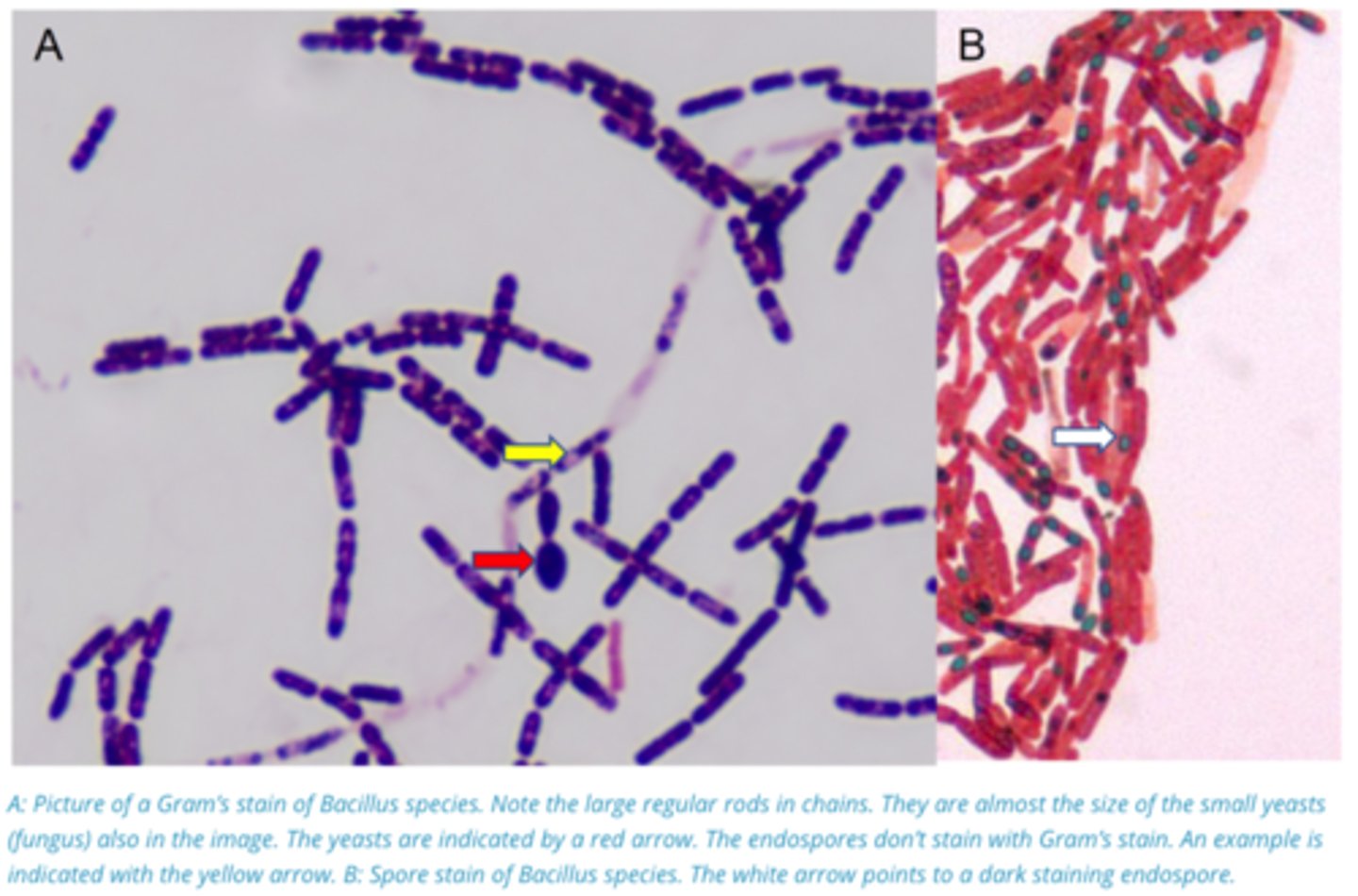
Describe how Aerobic Bacillus Species persist in the environment.
Bacillus anthracis:
Can only survive in in arid areas with seasonal rain that dries up quickly, as in nutrient rich and moist conditions it is outcompeted by other bacteria/fungal species. Endospores in run-off water accumulate in low-lying, poorly drained areas. If water runs freely spores will be diluted and washed away
Bacillus cerus:
Proliferates rapidly in soils and Produces Bacteriocins that allow it to out-compete other soil microrganisms
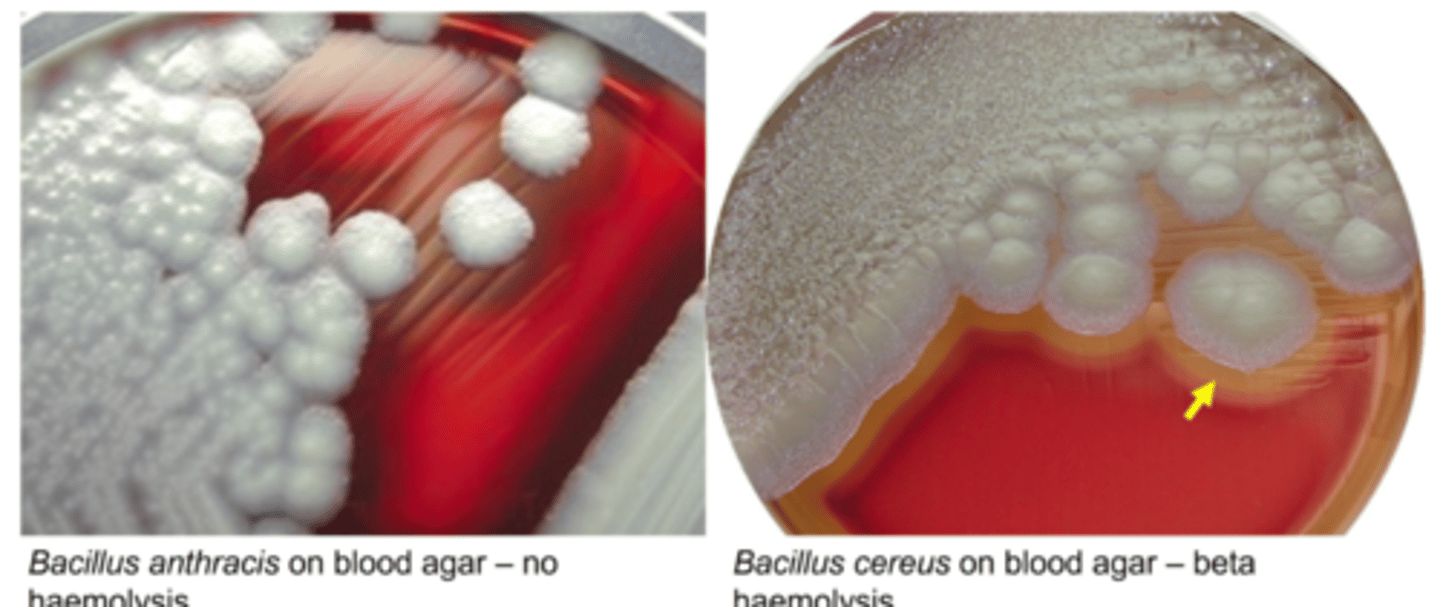
Describe Bacillus anthracis in terms of:
1. Bacterial Properties
2. What disease does Bacillus anthracis cause
3. Type of Disease/Animals susceptible
1. Forms Endospores: Gram +ve Rods that form Endospores. Aerobic, (can tolerate anaerobic conditions due to endospores)
2. Anthrax: Haemorrhagic Disease
3. Causes Per-Acute Disease, All Mammals are susceptible.
Describe Endospores of Bacillus anthracis in Terms of:
1. Conditions required for Spore Germination
2. What Soil Element Promotes Survival of Endospores
1. 20-40 Degrees and over 80% Humidity
2. Soils rich in Calcium
Describe the Anthrax Belt of Australia
Old stock route that was travelled, therefore has endospores of Bacillus Anthracis is still found in soils:
Extends from North Victoria, through NSW, and into Southern QLD
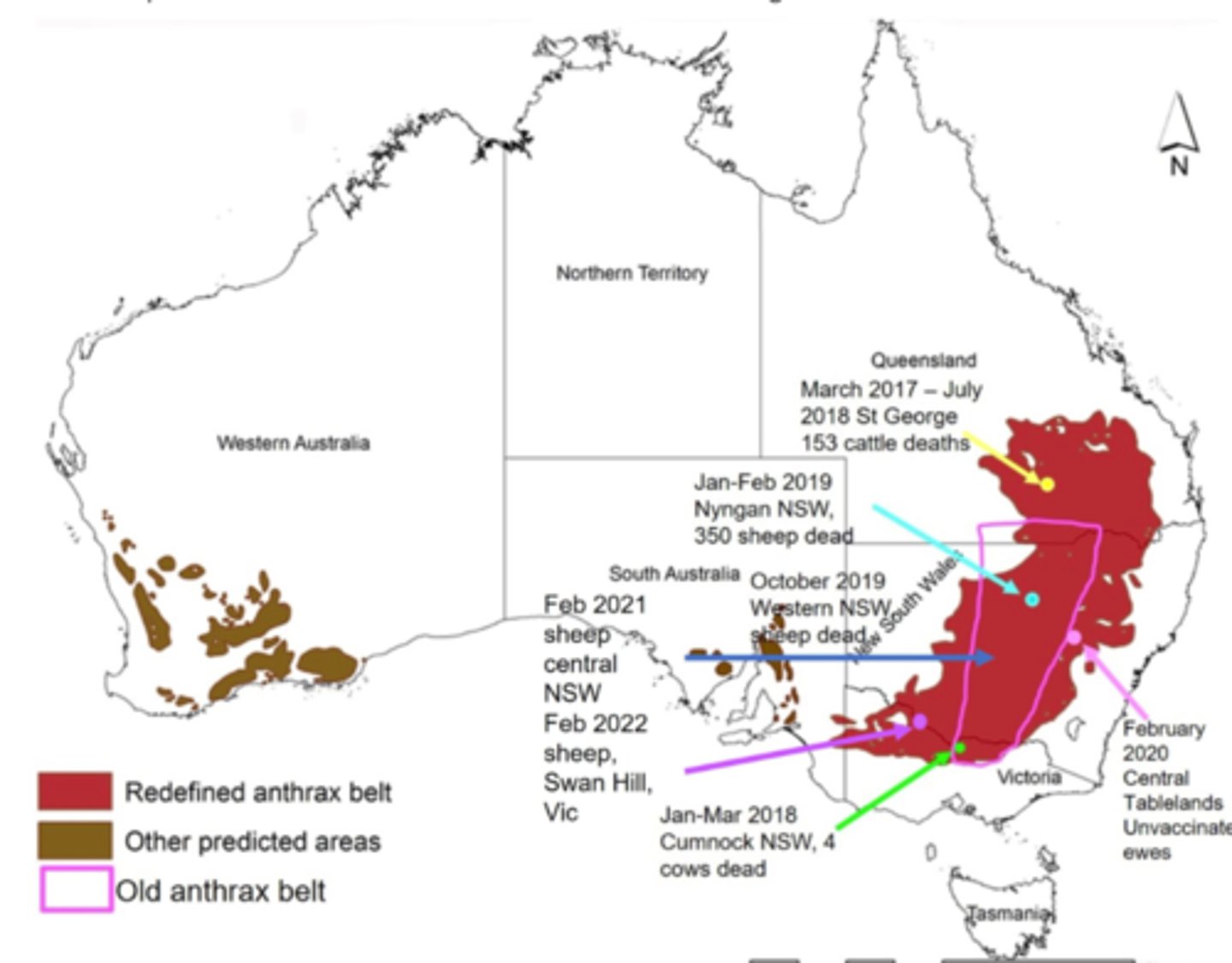
Describe why Bacillus anthracis (Anthrax) is a Notifiable Disease
- Kills animals
- Zoonotic
- Spores remain dormant for years, and only infect when soil is disturbed, Farmers become complacent and large populations occur = large anthrax outbreaks
- Easily obtainable, grown, and can be delivered by aerosol/water/food, making it ideal for Bioterrorism
Describe the Host Susceptibility/Epidemiology of Bacillus anthracis (Anthrax)
1. How Bacteria Enter the Soil from the Host
2. Animals Susceptible/More Likely to develop Severe Anthrax
3. Chain of Susceptibility for Anthrax
1. Fast Growing Bacteria in dying animal, reaches high levels in blood, as carcass is open and blood is exposed bacteria sporulate and enter the soil
2. Ruminants. They release greater number of Spores into the soil.
3. Ruminants > Equids > Humans/Pigs/Carnivores
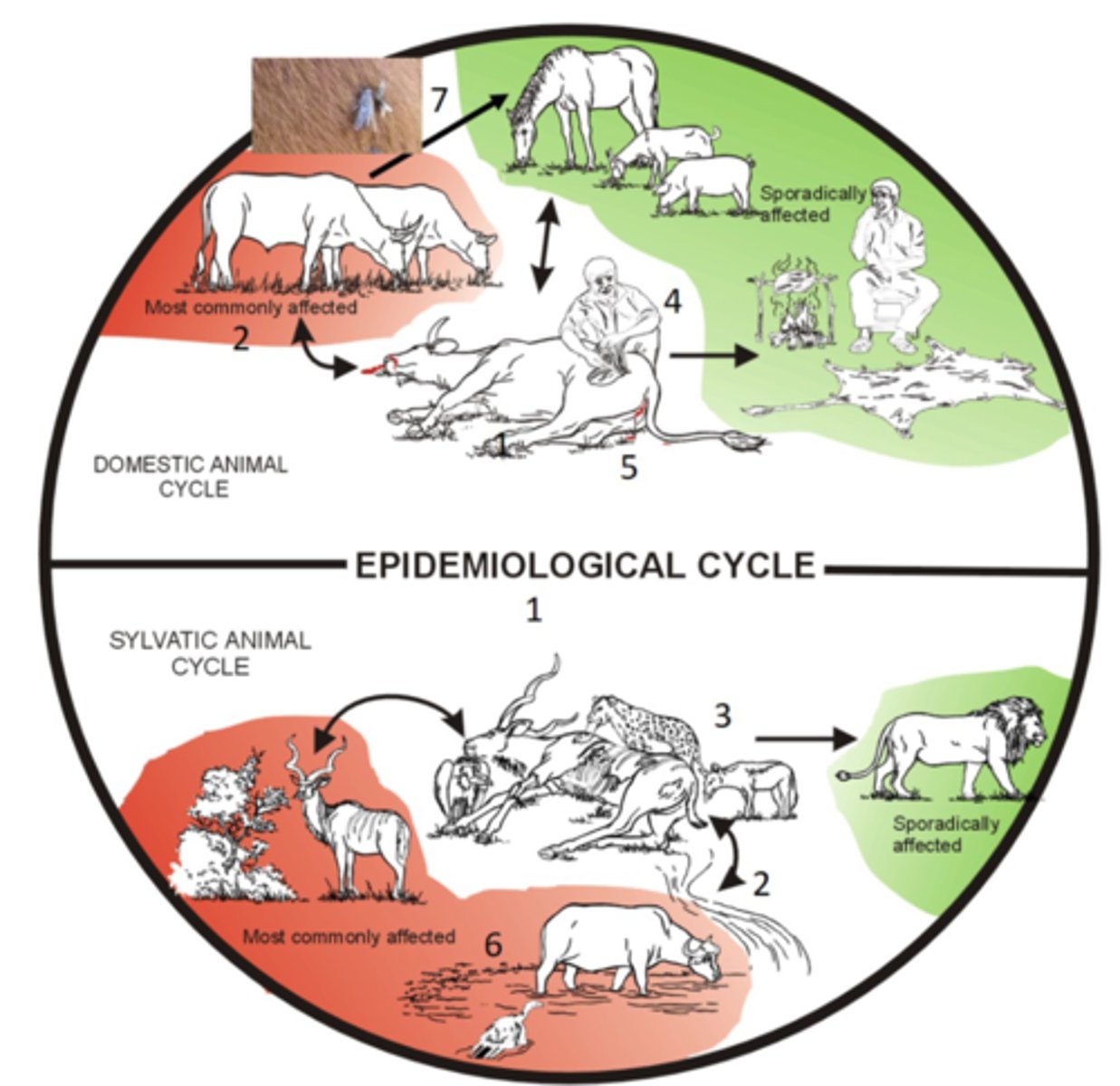
Describe the Transmission of Bacillus anthracis (Anthrax)
Most common through Ingestion of endospores in contaminated feed/water, Also:
- Per-cutaneous Infection
- Skin lesions/inhalation
- Biting flies can mechanically tramsit B. Anthracis on mouthparts
- Humans Mostly become infected percutaneously
- Wool Sorters Disease: spore inhalation on wool an animal hides
Describe the Role of the Following in Bacillus anthracis (Anthrax) Host-Bacterial Interactions and the Pathogenic mechanisms:
1. Poly-Gamma-D-glutamic Acid Capsule
2. Tripartite Toxin (Typical AB Toxin)
1. (Unique to anthrax) assists in early infection from being destroyed by the immune system → inhibits complement opsonization + lysis.
2. Consists of Protective Antigen, Lethal Factor, and Oedema Factor
Describe the Pathogenesis of the Following Components of Tripartite Toxin (Typical AB Toxin) in Bacillus anthracis (Anthrax):
1. Protective Antigen (PA)
2. Oedema Factor (EF)
3. Lethal Factor (LF)
1. Allows entry of LF/EF into Cytosol by creating a pore in cell membrane
2. converts ATP to cAMP, which disrupts Na/K ATPase pump leading to altered fluid distribution
3. cleaves MAPPS lowering gene transcription and protein producing causing increased apoptosis, decreased antigen presentation and decreased proinflammatory kinin production
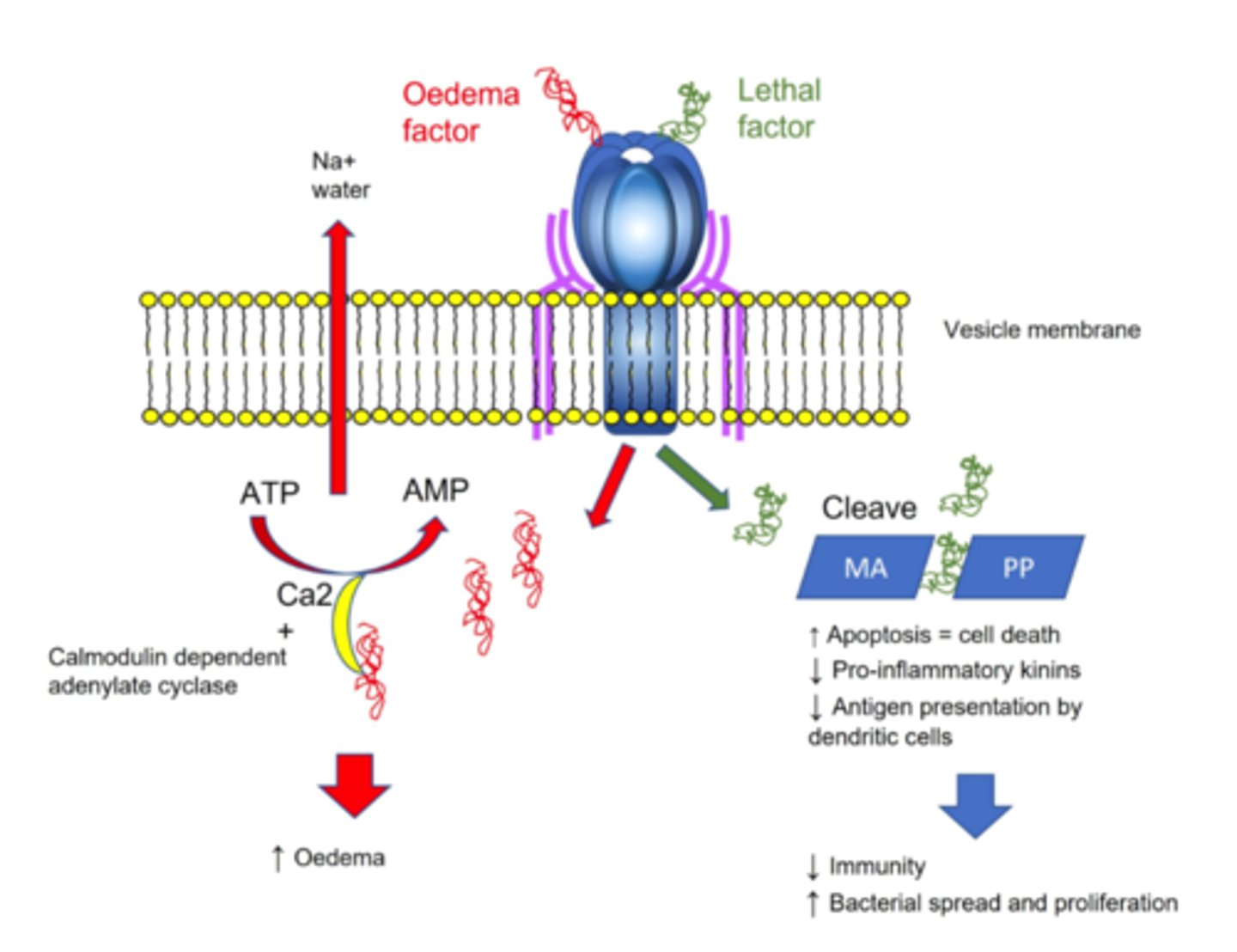
Describe the Pathogenesis of Bacillus anthracis (Anthrax)
1. Enters Body, Organism in spore format germinates
2. Replicate Locally, then move through lymphatics to Bloodstream causing bacteraemia. Resistant Hosts have localised infection, susceptible hosts have systemic Infection.
3. Tripartite Toxins Target Cells causing Oedema and Apoptosis
4. (Whole Body Affected) Oedema + Haemorrhages of Blood Vessels
5. Causes Large Spleen on post mortem, Poorly Clotting Blood, Neuro Signs
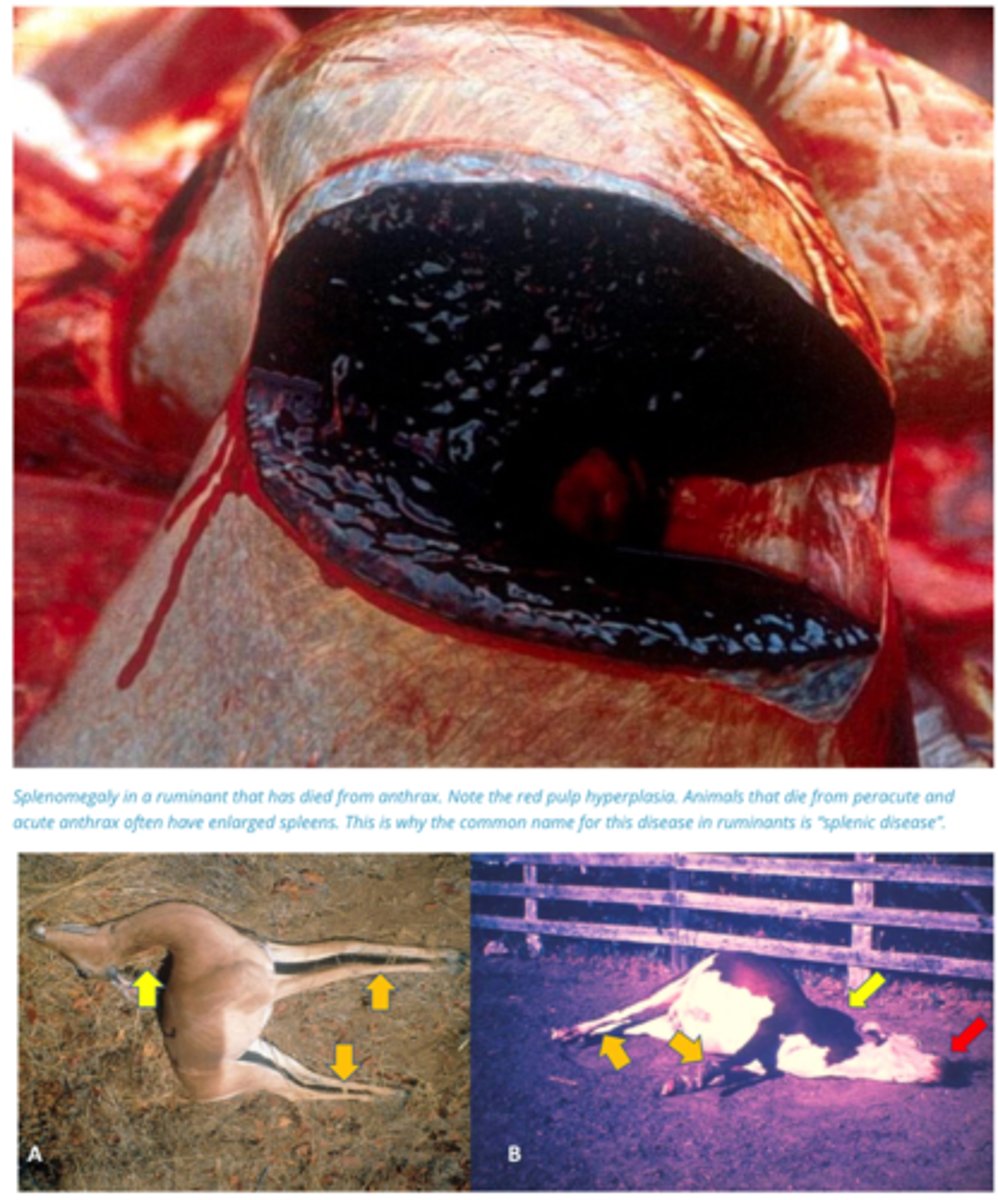
Describe Per-Acute Anthrax in terms of:
1. Animals That usually develop Per-Acute Anthrax
2. Course of Disease
3. Clinical Signs
1. Wild Ruminants
2. <2 Hours,
3. Bleeding from all orifices of the body. Animals have no clinical signs/some blood exuding from nostrils, mouth, and anus.
Describe Acute Anthrax in terms of:
1. Animals That usually develop Acute Anthrax
2. Course of Disease
3. Clinical Signs
1. Domestic Ruminants/Equids
2. <3 Days
3. Bleeding from all orifices of the body. Petechiation of Mucous Membranes, Fever, depression, difficulty breathing, loss of appetite. Bloody milk/diarrhoe, Swelling under the skin of the throat, chest, abdomen
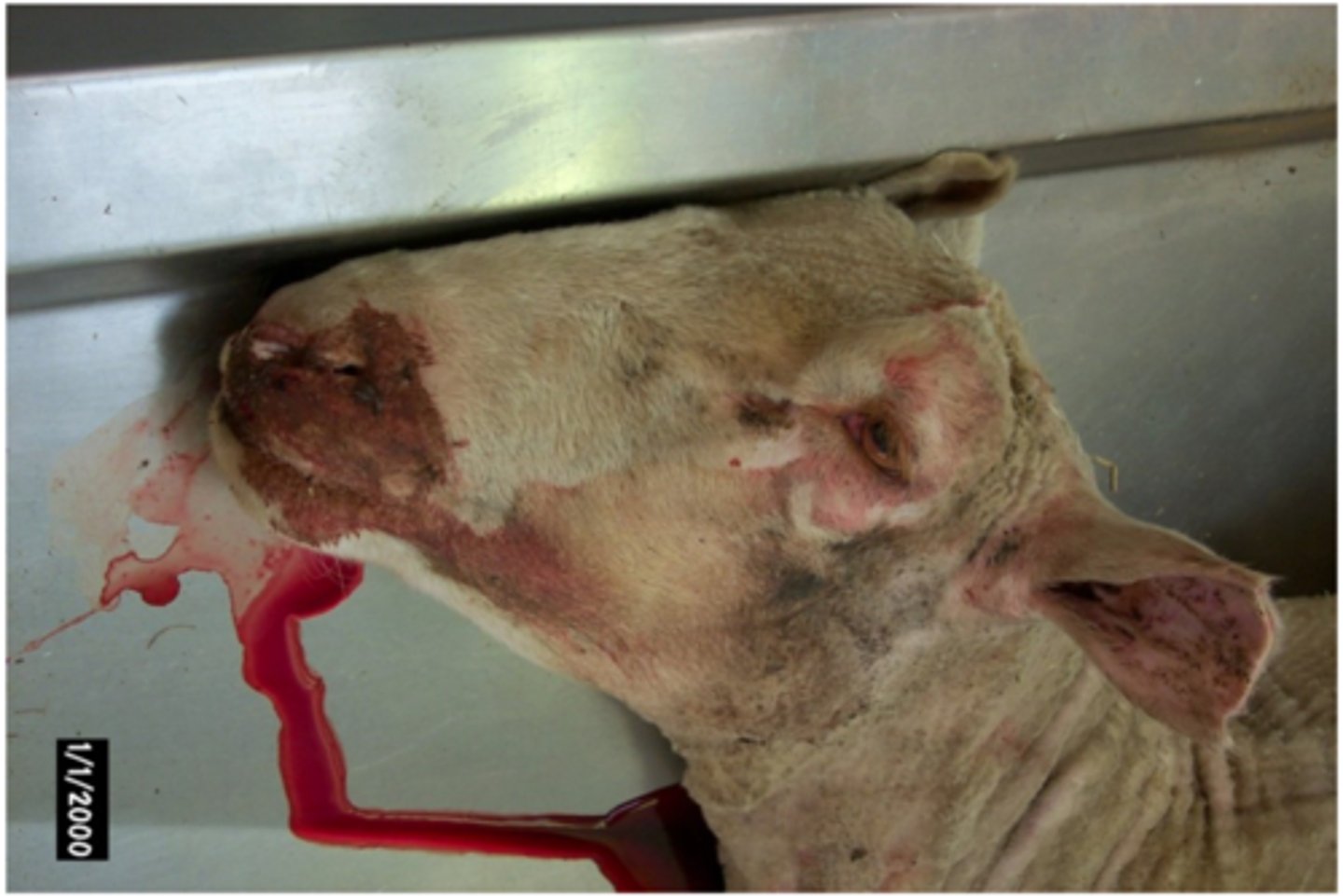
Describe Sub-Acute to Chronic Anthrax in terms of:
1. Animals That usually develop Sub-Acute to Chronic Anthrax
2. Course of Disease
3. Clinical Signs
1. Domestic Ruminants/Equids
2. >3 Days
3. Bleeding from all orifices of the body. subcutaneous oedematous swelling of throat and neck. Localised infection can spread to septicaemia (Fatal). Loss of appetite, vomiting, Bloody Diarrhea
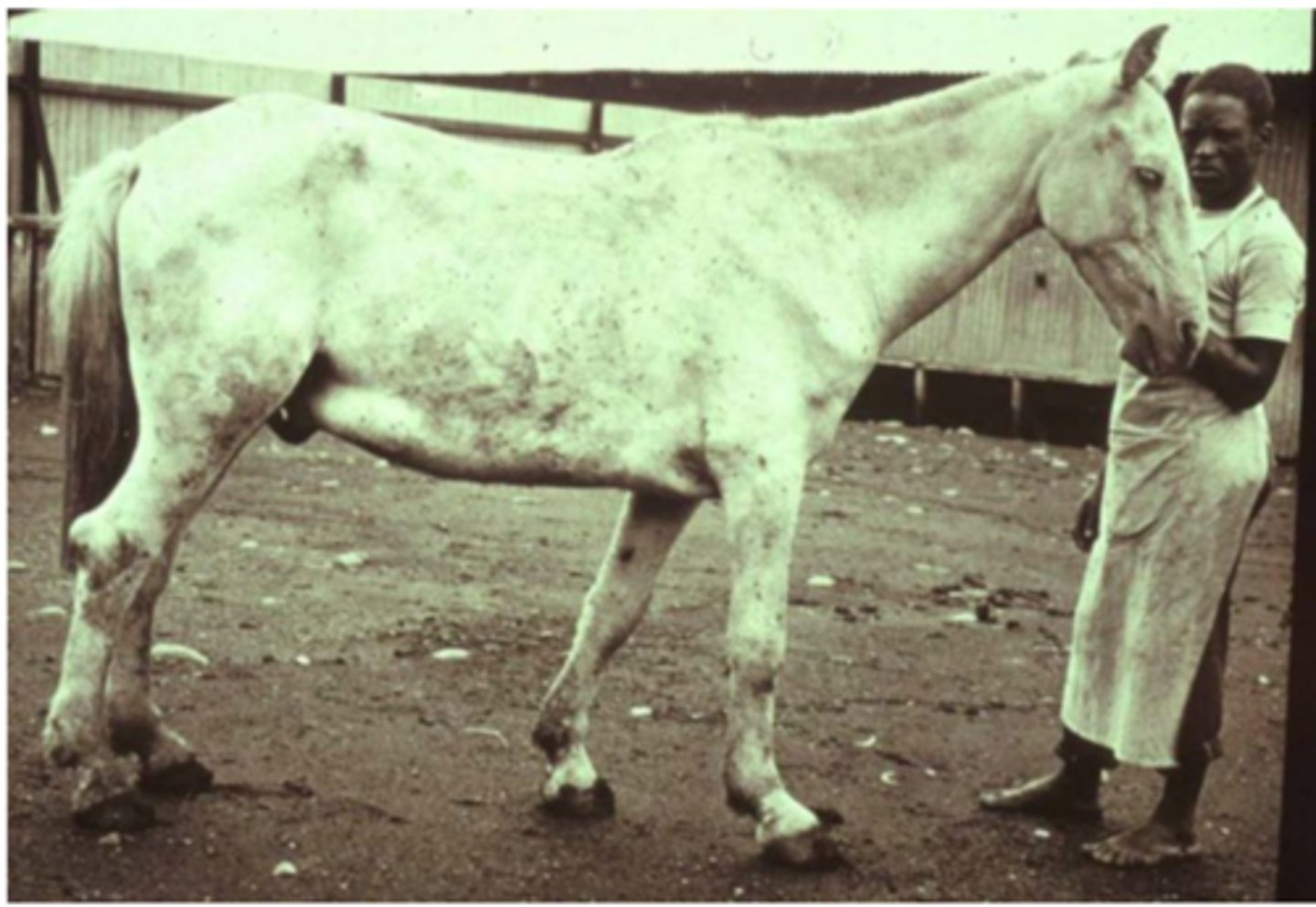
Describe the Diagnosis of Bacillus Anthracis (Anthrax) in Australia
Blood Smears + RAT Test (Send to Lab)
1. Obtain History of Outbreak, examine sick animals
2. Do not perform post mortem as it results in spore release
3. Take Bloods, Rapid antigen test available, send to lab to confirm
4. Make blood smears and view under microscope. Look for Brick, rod shaped pink stained bacteria (Bacteria usually altered by putrefactive processes, but capsule ruminants remain)

Describe the Control of Bacillus Anthracis (Anthrax) in Australia
Vaccination, Burn Carcusses
1. Active Surveillance
2. Vaccination (Live, Effective for 9-12 Month's)
3. Carcass management: Don’t want to move the animal, Burn Carcasses however high heat is needed, Treat with formaldehyde